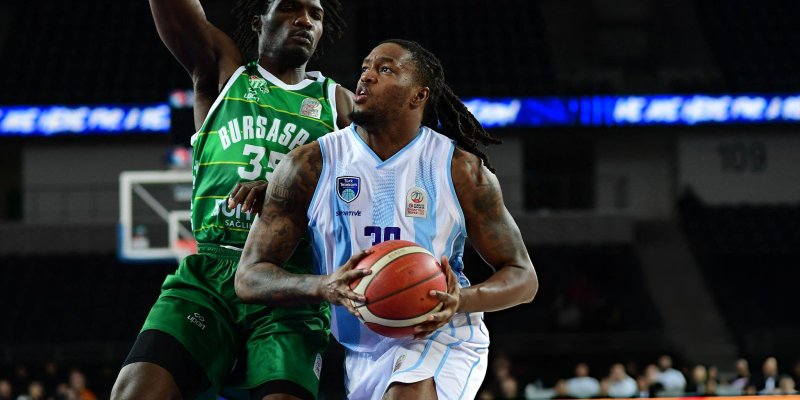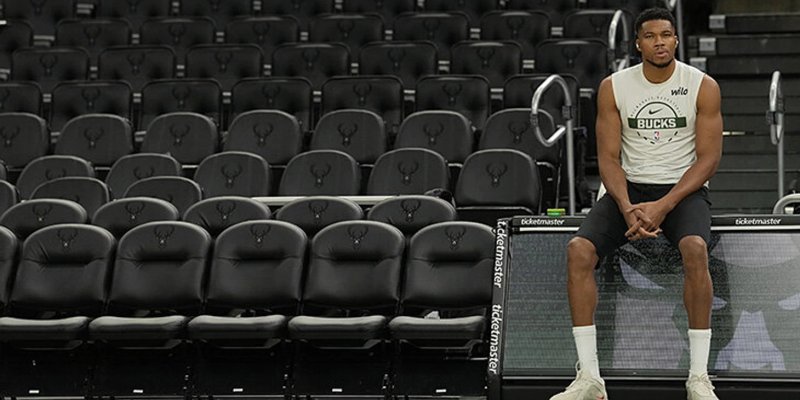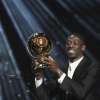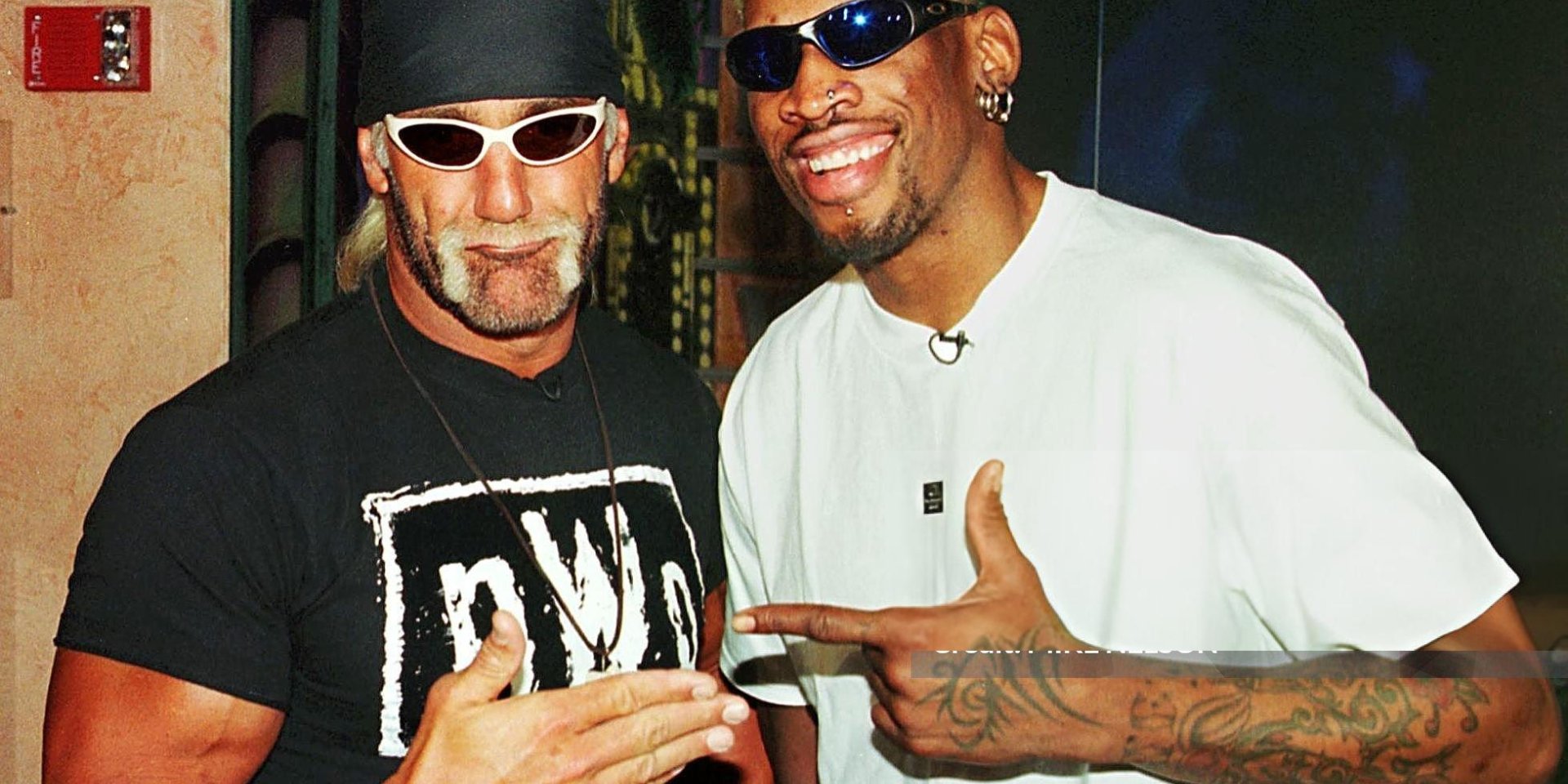
In the late 1990s American sports experienced a genuine boom of crossover experiments, yet few moments rival the one when wrestling superstar Hulk Hogan lured NBA players Karl Malone and Dennis Rodman into the WCW ring. The storyline proved an ideal blend of television spectacle, childhood dreams and shrewd marketing: one of the league’s most spectacular Finals morphed into the poster child for 1998’s marquee wrestling event.
From Arena Seats to Ropes: The Mailman’s Childhood Dream Path
Future two-time regular-season MVP Karl Malone first saw wrestling in a small arena in Monroe, Louisiana, where his mother took him and his brothers on weekends. After seeing the “box” of the ring live, seven-year-old Karl fell in love with the show so deeply that he whispered, “One day I’ll jump off the top rope, too.” Three decades later, after losing the 1998 NBA Finals to Michael Jordan’s Bulls, the Mailman decided to honour that childhood vow. Credit to Utah owner Larry Miller: he not only refrained from forbidding the idea but set a single condition: “No bruises, no sprains—come back to training camp in one piece.”
The Worm in the nWo: Why Five Championship Rings Weren’t Enough for Rodman

Dennis Rodman was accustomed to smashing stereotypes: neon hair, piercings, wigs and a manic pursuit of every rebound had long turned him into a tabloid headline machine. In the 1996/97 season the Worm had already tested himself as a member of the New World Order, appearing alongside Hulk Hogan on Nitro right after the Bulls’ latest title parade. The alliance with the wrestling icon was logical: both understood the power of television and enjoyed provocation more than the classic babyface image. In WCW Rodman took part in angles against Lex Luger and Paul Wight (The Giant), and the high point came when he helped Hogan capture the WCW Championship belt.
The NBA Finals as a Trailer for a Wrestling Show

WCW president Eric Bischoff knew that the No. 1 sport in American prime time was the NBA, so he arranged in advance with the two star forwards for a mini-angle right on the hardwood. The instruction was simple: “Don’t affect the score, but make sure the audience sees the distrust between you.” In the second half of Game 6 Rodman and Malone fought for a rebound, fell, got up, fell again—and received double technicals. Finals ratings skyrocketed, and the next morning sports columns buzzed about a “back-stage script.” Accusations of “tainting” the playoffs only fueled interest in the upcoming Bash at the Beach match.
Bash at the Beach 1998: 24 Minutes of Action and Scripted Chaos

At Daytona Beach Malone hit the ramp teaming with Diamond Dallas Page—the inventor of the signature Diamond Cutter and his mentor in the wrestling world. Across the ring stood the “brutal chemistry” of Hulk Hogan and Dennis Rodman, personifying the nWo 4 Life credo. The very first clang of the bell gave fans goosebumps: on paper the basketball players were rookies, yet they played their parts as if they had rehearsed for years. Malone delivered a crisp bodyslam to Rodman; Rodman answered with a surprising arm drag. When Page popped the arena with his Cutter on Hogan, the crowd sensed the finish, but Hogan’s grim bodyguard The Disciple intervened. While the referee was distracted, Hogan executed a legal pinning hold and Rodman cut off the Mailman’s save. The result—heels victorious on record, yet after the bell Malone knocked out the bodyguard, hit another Cutter and even floored the referee, igniting a roar. The symbolic moral: the Bulls prevailed again, but the last word belonged to the Jazz leader.
Echo of the Show: Ratings, Fines and Cultural Legacy
Despite a $10,000 fine and coach Phil Jackson’s annoyance over a missed practice, Rodman had no regrets: the Nitro episode featuring him delivered WCW a cable-rating record of 5.0 and landed headlines in USA Today, Sports Illustrated and even The Wall Street Journal. Bash at the Beach 1998 sold more than 580,000 pay-per-views—the third-highest figure in company history. For Malone the story proved the universality of sport: a man who had played 98 games in a season needed only two weeks to master wrestling’s “vertical hustle,” headlocks and carefully choreographed bump landings.
Hogan’s Legacy: A Bridge Between Arenas

Hulk Hogan, whose real American gimmick in the ’80s transformed wrestling from cable-channel exotica into mainstream entertainment, possessed unique charisma. He managed to bring into the ring not only title-holding boxers like Muhammad Ali but also active stars from other leagues—from the NFL to the NBA. In 1998 his collaboration with Rodman and Malone finally erased the lines between disciplines: basketball-show fans got a ticket to the world of “worked” sport, while wrestling fans were treated to fresh drama with real-life heroes. The move has been copied many times since—Shaq in AEW, Pat McAfee in WWE—but it was the duel of the two power forwards that made sport-tainment part of the cultural mainstream.
Conclusion
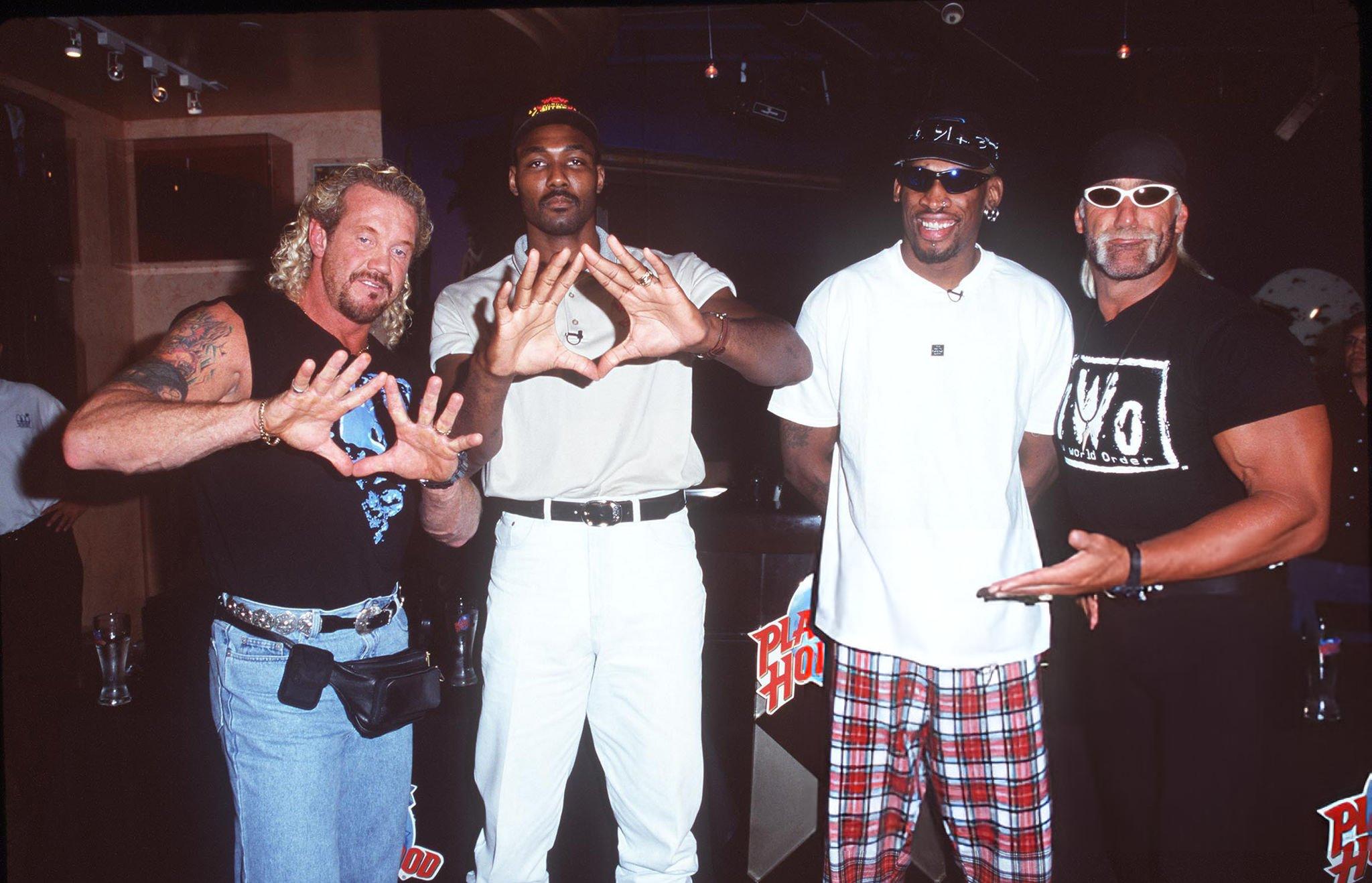
The match lasted 23 minutes 47 seconds, the NBA Finals six games, yet conversations about that “magical summer of ’98” have never ceased. Hulk Hogan’s passing reminds us that his legacy reaches far beyond wrestling; he knew how to turn sporting rivalries into global spectacles and to open the ropes to those accustomed to shooting at a basket, not at an opponent. The tale of Malone and Rodman is the perfect illustration: if you possess charisma and the courage to put your reputation on the line, the boundaries between leagues disappear and the audience receives a show talked about for decades.

